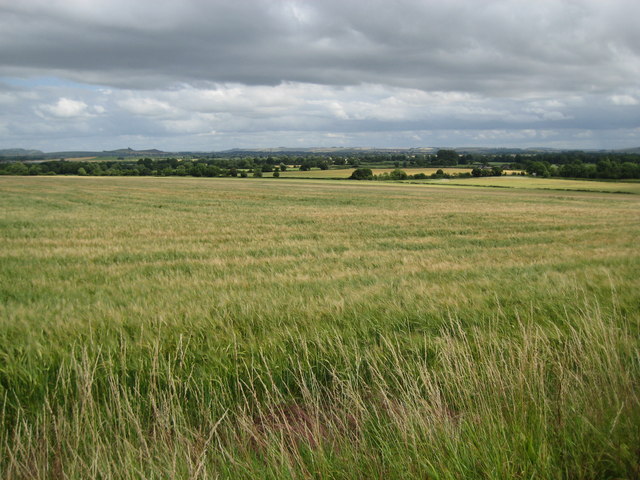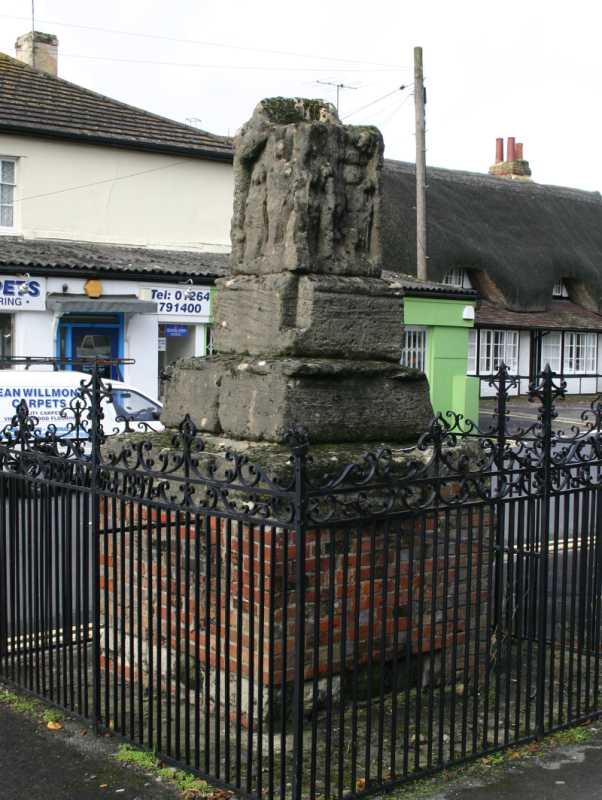|
A342 Road
The A342 is an A road in England that runs from Pewsham near Chippenham, Wiltshire to Andover, Hampshire. Route The road begins at the A4 junction just outside the small village of Pewsham, to the east of Chippenham. It heads south past the village of Derry Hill towards Devizes, briefly meeting the A3102 near Sandy Lane. Just outside Devizes the road meets the A361, and once in the centre of town it meets the A360. Continuing southeast in the Vale of Pewsey, under the northern slope of Salisbury Plain, the road reaches Upavon where it meets the A345 and turns east, over the Plain. After passing through Everleigh the road meets the A338 before entering Ludgershall and meeting the A3026. The final part of the route travels southeast where the road ends at a roundabout with the A343 and A303 just outside Andover. Settlements on route * Pewsham * Derry Hill * Devizes * Sandy Lane * Upavon * Everleigh * Ludgershall * Andover Andover may refer to: Places Australia ... [...More Info...] [...Related Items...] OR: [Wikipedia] [Google] [Baidu] |
Derry Hill
Derry Hill is a village in the English county of Wiltshire, in the civil parish of Calne Without. It has an elevated position at the northern edge of the Bowood House estate, about south-east of the centre of the town of Chippenham. Geography Derry Hill lies to the south of the A4 road between Chippenham and Calne. The old London to Bristol road turned left after the Soho Inn, along what is now the village's Church Road, to join the Devizes road; then the old road descended Old Derry Hill. The modern section of the road, avoiding the steep descent, was built between 1787 and 1810, and is now part of the A4. Previously, Derry Hill was in the vicinity of the Calne branch of the Wilts & Berks Canal that followed the course of the River Marden; the Wilts & Berks Canal Trust aims to restore the canal to run through the village, just north of Church Road. The Chippenham and Calne branch of the Great Western Railway passed by the village, from its opening in 1863 until its closure t ... [...More Info...] [...Related Items...] OR: [Wikipedia] [Google] [Baidu] |
Vale Of Pewsey
The Vale of Pewsey or Pewsey Vale is an area of Wiltshire, England to the east of Devizes and south of Marlborough, centred on the village of Pewsey. Geography The vale is an extent of lower lying ground separating the chalk downs of Salisbury Plain to the south from the Marlborough Downs to the north. It is around long and around wide. At the western end is the town of Devizes. Larger settlements in the vale include Pewsey and Burbage with many smaller villages, the larger ones including Bishops Cannings, Etchilhampton, Urchfont, Chirton, Alton Priors, Woodborough, Milton Lilbourne, Easton Royal and Wootton Rivers. Although not itself part of the downs, the vale is included as part of the North Wessex Downs AONB (Area of Outstanding Natural Beauty). The vale is a major east–west feature opening to the west towards the Bristol Channel, but is drained by the headwaters of the Salisbury Avon, rather than the westward-flowing Bristol Avon. The river cuts through the chalk ... [...More Info...] [...Related Items...] OR: [Wikipedia] [Google] [Baidu] |
Roads In England
The United Kingdom has a network of roads, of varied quality and capacity, totalling about . Road distances are shown in miles or yards and UK speed limits are indicated in miles per hour (mph) or by the use of the national speed limit (NSL) symbol. Some vehicle categories have various lower maximum limits enforced by speed limiters. A unified numbering system is in place for Great Britain, whilst in Northern Ireland, there is no available explanation for the allocation of road numbers. The earliest specifically engineered roads were built during the British Iron Age. The road network was expanded during the Roman occupation. Some of these roads still remain to this day. New roads were added in the Middle Ages and from the 17th century onwards. Whilst control has been transferred between local and central bodies, current management and development of the road network is shared between local authorities, the devolved administrations of Scotland, Wales and Northern Ireland, a ... [...More Info...] [...Related Items...] OR: [Wikipedia] [Google] [Baidu] |
A303 Road
The A303 is a trunk road in southern England, running between Basingstoke in Hampshire and Honiton in Devon via Stonehenge. Connecting the M3 and the A30, it is part of one of the main routes from London to Devon and Cornwall. It is a primary A road throughout its length, passing through five counties. The road has evolved from historical routes, some of which are thousands of years old, including the Harrow Way and the Fosse Way. The modern route was first laid out in the early 19th century as the New Direct Road, a faster coaching route from London to Exeter. It was initially in demand but fell into disuse as railways became popular from the 1840s onwards. It was not thought of as a significant through route when roads were initially numbered, but was revived as a major road in 1933, eventually becoming a trunk road in 1958. Since then, the A303 has gradually been upgraded to modern standards, though there are still several unimproved parts with longstanding plans t ... [...More Info...] [...Related Items...] OR: [Wikipedia] [Google] [Baidu] |
A343 Road
List of A roads in Great Britain, A roads in List of A roads zones in Great Britain, zone 3 in Great Britain starting west of the A3 road (England), A3 and south of the A4 road (England), A4 (roads beginning with 3). Single- and double-digit roads Triple-digit roads Four-digit roads (30xx) Four-digit roads (31xx and higher) Notes and references ;Notes ;References {{UK road lists Roads in England, 3 Lists of roads in the United Kingdom, 3 ... [...More Info...] [...Related Items...] OR: [Wikipedia] [Google] [Baidu] |
A3026 Road
List of A roads in zone 3 in Great Britain Great Britain is an island in the North Atlantic Ocean off the northwest coast of continental Europe. With an area of , it is the largest of the British Isles, the largest European island and the ninth-largest island in the world. It is ... starting west of the A3 and south of the A4 (roads beginning with 3). Single- and double-digit roads Triple-digit roads Four-digit roads (30xx) Four-digit roads (31xx and higher) Notes and references ;Notes ;References {{UK road lists 3 3 ... [...More Info...] [...Related Items...] OR: [Wikipedia] [Google] [Baidu] |
Ludgershall, Wiltshire
Ludgershall ( , with a hard g) is a town and civil parish north east of Salisbury, Wiltshire, England. It is on the A342 road between Devizes and Andover. The parish includes Faberstown which is contiguous with Ludgershall, and the hamlet of Biddesden which is to the east on the border with Hampshire. History There is evidence of settlement in the late Bronze Age or early Iron Age at Windmill Down on the western edge of the parish. The ''Domesday Book'' of 1086 recorded small settlements at Ludgershall and Biddesden. The entry for ''Litlegarsele'' reads: " Edward of Salisbury holds Ludgershall. Alfward held it before 1066; it paid tax for one hide (about 24 acres). Land for 3 ploughs. In Lordship 2 ploughs, 3 slaves; 8 Cottagers with 1 plough. Pasture 3 furlongs long and 1 furlong wide; woodland ½ league long and 2 furlongs wide." The value was 100 shillings. The name "Litlegarsele" may come from "lytel", small and "garsheath", a grassy place, thus a "small grazing area" or ... [...More Info...] [...Related Items...] OR: [Wikipedia] [Google] [Baidu] |
Everleigh, Wiltshire
Everleigh, pronounced and also sometimes spelt Everley, is a village and civil parish in east Wiltshire, England, about southeast of the town of Pewsey, towards the northeast of Salisbury Plain. The village is also known as East Everleigh, to distinguish it from the hamlet of Lower Everleigh which lies about further west on the A342 road that connects Andover and Devizes. The village is surrounded by land known as Everleigh Drop Zone, owned by the Ministry of Defence that is used for military training as part of the Salisbury Plain Training Area. History The partly-forested area was known for recreational hunting. By the 13th century there was a deer park and a rabbit warren, and later activities included hare coursing, falconry and racehorse training. East Everleigh developed at a crossroads where the old Marlborough-Salisbury road (now only a track in the south of the parish) met the Devizes-Andover road (now the A342). In the 18th and 19th centuries, several inns provided ... [...More Info...] [...Related Items...] OR: [Wikipedia] [Google] [Baidu] |
A345 Road
The A345 is a secondary A roads in Great Britain, A road in Wiltshire, England running from Salisbury to Marlborough, Wiltshire, Marlborough and the A4 road (Great Britain), A4. The road is a main south–north link across Salisbury Plain, which is renowned for its rich archaeology, and passes many ancient points of interest along its way. Route The road begins in Salisbury at the Castle roundabout and travels north out of the city, passing close to Old Sarum castle, taking a predominantly straight line to Boscombe Down and then Amesbury before meeting the A303 road, A303 at Countess roundabout where it shares Countess Services with the major road. At this point it passes within of the World Heritage Site at Stonehenge. Continuing north, the road passes near to Woodhenge and the Ministry of Defence (United Kingdom), Ministry of Defence Royal School of Artillery base at Larkhill. This part of the route can be hazardous as there are often tanks crossing and the road is susceptib ... [...More Info...] [...Related Items...] OR: [Wikipedia] [Google] [Baidu] |
Upavon
Upavon is a rural village and civil parish in the county of Wiltshire, England. As its name suggests, it is on the upper portion of the River Avon which runs from north to south through the village. It is on the north edge of Salisbury Plain about south of Pewsey, southeast of the market town of Devizes, and north of the cathedral city of Salisbury. The A345 and A342 roads run through the village. History Occupation of the area dates back to the Iron Age and Romano-British settlement at Casterley Camp, approximately southwest of the current village, and to the southeast was the small Iron Age settlement of Chisenbury Camp. The first mention of Upavon is in the 1086 Domesday Book as ''Oppavrene''; although no population was recorded, it can be estimated that the village supported some 200 to 250 people. The village prospered during the 12th and 13th centuries and started to develop features that are recognisable today. A large Norman church replaced the previous Saxon o ... [...More Info...] [...Related Items...] OR: [Wikipedia] [Google] [Baidu] |
Salisbury Plain
Salisbury Plain is a chalk plateau in the south western part of central southern England covering . It is part of a system of chalk downlands throughout eastern and southern England formed by the rocks of the Chalk Group and largely lies within the county of Wiltshire, but stretches into Hampshire. The plain is famous for its rich archaeology, including Stonehenge, one of England's best known landmarks. Large areas are given over to military training and thus the sparsely populated plain is the biggest remaining area of calcareous grassland in northwest Europe. Additionally the plain has arable land, and a few small areas of beech trees and coniferous woodland. Its highest point is Easton Hill. Physical geography The boundaries of Salisbury Plain have never been truly defined, and there is some difference of opinion as to its exact area. The river valleys surrounding it, and other downs and plains beyond them loosely define its boundaries. To the north the scarp of the ... [...More Info...] [...Related Items...] OR: [Wikipedia] [Google] [Baidu] |






